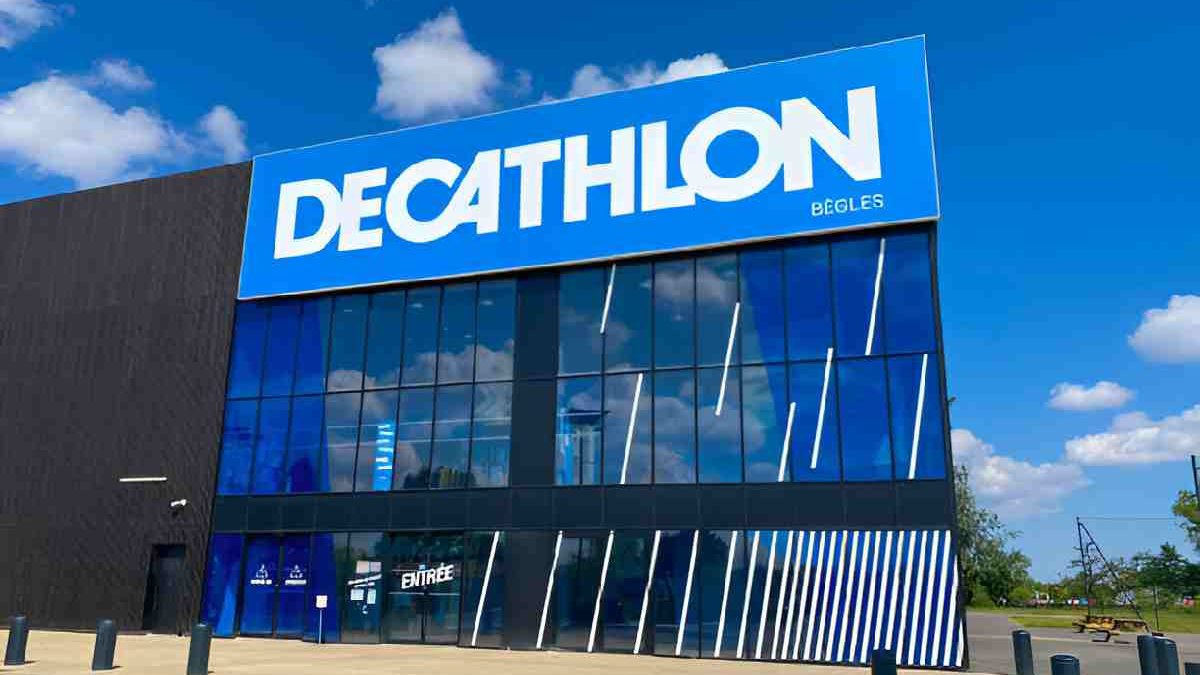Table of Contents
Introduction
You’ve probably seen the name Decathlon pop up when you search for affordable workout gear, bikes, or camping stuff. Or maybe a friend casually said, “Got it from Decathlon — way cheaper than REI.”
So you’re wondering…
- “What’s the deal with this brand?”
- “Are they legit or just another budget knockoff?”
- “What’s their mission — or is it just selling gear for cheap?”
Here’s the full breakdown — what Decathlon is, where they came from, what they stand for, and how they’re different from the usual suspects like Nike, Adidas, or even Amazon.
What is Decathlon? The Straight-Up Version
In a nutshell: Decathlon is a French sportswear and outdoor gear company that designs, makes, and sells its own products — all under one roof.
So instead of buying brands like The North Face, Columbia, or Merrell, Decathlon sells its own in-house brands for each sport or activity.
Think of it like this:
- You’re into trail running? They’ve got Evadict.
- You need a solid yoga mat? That’s Kundalini.
- Want a road bike? They’ll hook you up with Triban or Van Rysel.
- Looking for a reliable tent? Meet Quechua.
They cover over 80 sports — from soccer and swimming to archery and climbing — all without breaking the bank.
The Decathlon Origin Story (Not Boring, Promise)
Let’s go back to 1976 — Decathlon started in Lille, France, with one mission:
“Make sports accessible to everyone.”
And they meant everyone. Not just elite athletes. Not just people who drop $300 on trail shoes. Literally anyone who wants to move, play, or explore outdoors.
Fast forward to today — Decathlon is:
- In 70+ countries
- With over 1,700 stores worldwide
- Employing 100,000+ people
Their first US store opened in San Francisco in 2017, and while they scaled back physical locations in the States, their online store (Decathlon.com) still ships all over the country.
What’s the Mission Behind the Brand?
Here’s the heart of it — and it’s not just marketing fluff.
Decathlon’s mission:
“To sustainably make the pleasure and benefits of sport accessible to the many.”
Let’s break that down:
- “Accessible” = Affordable + Available
They’re known for:
- Budget-friendly prices (think $40 for a solid pair of trail runners)
- In-house design and production (cutting middlemen)
- Selling direct-to-consumer
The quality is surprisingly solid for the price — especially if you’re just getting started in a new sport.
- “Sustainably” = Long Game
They’re putting more effort into:
- Eco-design: Materials with lower environmental impact
- Second-life programs: Refurbishing returned items
- Recycling initiatives: Bringing back used gear
- Carbon reduction goals: Working to be net zero
- “Sport is for everyone” = Inclusivity
Decathlon doesn’t care if you’re climbing Everest or just learning how to swim. They build products for beginners, casuals, and athletes alike — and they do it without gatekeeping.
No “bro culture.” Just gear that works and doesn’t wreck your budget.
So… Why Should You Care?
Let’s be real: it’s easy to think cheap = bad. But that’s not always the case with Decathlon.
Here’s what makes them stand out:
✅ They do everything in-house
From research to design to production, it’s all internal. That means more control over quality, pricing, and supply chain.
✅ They make sport-specific gear
Every sport has its own dedicated brand. It’s not one-size-fits-all. Whether you’re rock climbing, playing tennis, or paddleboarding — they’ve studied what people actually need.
✅ They don’t push trends
You won’t find flashy logos or sponsored athletes here. Their stuff isn’t about status — it’s about function.
A Real Example: My First Decathlon Buy
A few years ago, I needed running shoes but didn’t want to drop $150. Found a pair from Decathlon for $35.
Expectation? Meh, it’ll probably fall apart in a month.
Reality? Wore them for 6 months, multiple 5K runs, a mud race, and weekend errands. Still solid. Not perfect — grip could’ve been better — but the cost-to-performance ratio? Insane.
I’ve since bought:
- A foldable bike (Triban)
- Hiking poles (Quechua)
- A swim cap and goggles (Nabaiji)
All under $100 total.
Sustainability at Decathlon: Not Just Buzzwords
They’re not perfect, but they’re putting in real work — way more than many “fast gear” brands.
Some key moves:
- Eco-designed products labeled clearly on their site
- Worn Again Project: Recycling used textiles into new gear
- Carbon footprint labels on select items (France rollout so far)
They even launched a rental program in some countries — so you can borrow gear instead of buying it.
That tent you’ll use once this summer? Rent it instead.
Global Reach, Local Feel
Even though they’re a global giant, Decathlon keeps a local vibe in stores:
- Store managers get a lot of autonomy
- They listen to customer feedback constantly
- Product development teams include athletes and coaches
They’re not trying to out-cool anyone — they’re just solving real sport problems for everyday people.
Thinking of Trying Decathlon?
If you’re new to Decathlon, start here:
- Check out their beginner gear (they often have bundles or value kits)
- Explore Quechua tents if you’re camping on a budget
- Look at Triban or Van Rysel if you want a bike without dropping $2K
- And if anything doesn’t work out? Their return policy is super chill (we broke that down right here)
Final Take: Why Decathlon’s Worth Knowing
At the end of the day, here’s your Overview of Decathlon (brand, mission):
- A global brand that started in France
- Focused on making sport affordable, sustainable, and inclusive
- Designs its own gear for 80+ sports
- Great for beginners, casual athletes, or anyone who wants gear that just works
- Quietly pushing the envelope in eco-conscious production without shouting about itLearn more about Decathlon’s gear in our Ultimate Decathlon Guide

